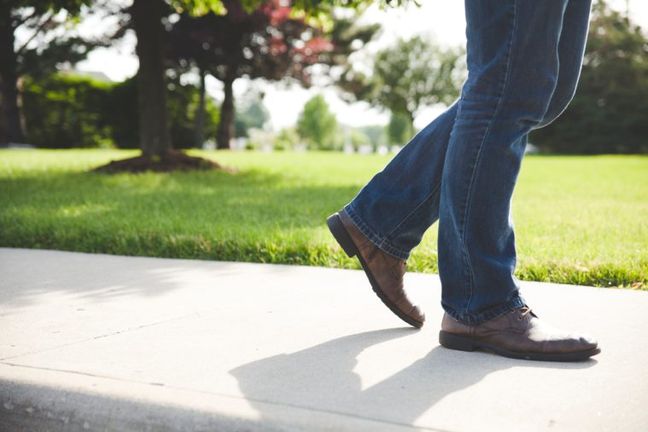When a pedestrian trips and falls on the sidewalk, is the abutting landowner liable? As is often the case, the answer is, “it depends.”
California Law
Generally, an abutting property owner does not owe a duty to the public to maintain a sidewalk where there was no evidence the owner acted negligently with respect to his property, other than merely failing to maintain the sidewalk. (Williams v. Foster (1989) 216 Cal.App.3d 510.) Rather, a municipality has the primary responsibility for maintaining public sidewalks. (Schaefer v. Lenahan (1944) 63 Cal.App.2d 324, 327.)
By statute, however, the owner of real property adjacent to a public street owes a duty to the city or county to maintain the sidewalk in front of the property. (Sts. & Hy. Code § 5610.) This state statute imposes a duty to repair, but does NOT create tort liability or a duty to indemnify municipalities, except where the property owner created the defect or exercised dominion or control over the abutting sidewalk. (Jordan v. City of Sacramento (2007) 148 Cal.App.4th 1487.)
Liability Altered by Local Ordinance
Depending on the language of the local ordinance, the general rule can be altered. If, for example, the city ordinance enacts an ordinance expressly making abutting landowners liable to members of the public for failure to maintain the sidewalk, then an injured pedestrian may recover against a landowner. (Williams, supra. at 521, and see Gonzales v. City of San Jose (2004) 125 Cal.App.4th 1127 where the Court relied on language from the San Jose City ordinance stating, “if an abutting property owner fails to maintain a sidewalk in a non-dangerous condition and any person suffers injuries as a result thereof the property owner shall be liable to such person for the resulting damages or injury” [emphasis added].) As a result, the San Jose ordinance altered the general rule, thereby making adjacent landowners liable to the public for injuries caused by the sidewalk.
Absent express intent to create a duty to the public, however, an ordinance will not create a duty on the part of a landowner. (Schaefer, supra. at 327.) In Contreras v. Anderson (1977) 59 Cal.App.4th 188, a pedestrian sued property owners for injuries sustained from a fall on a brick walkway contained in a city-owned planting strip in front of a defendant landowner’s property. The city in question, Berkeley, previously enacted an ordinance requiring landowners to maintain the sidewalk abutting their property. The ordinance in Contreras stated, “[an adjoining landowner] shall maintain any sidewalk in such a condition that the sidewalk will not endanger persons or property and maintain it in a condition which will not interfere with the public convenience in the use of those works or areas…. (Contreras, supra at 196.) The property owner filed a motion to dismiss the suit prior to trial. The court determined the duty imposed by the City ordinance did not give rise to liability for the injury in question since the ordinance did not expressly state an intent to create a duty to the public. (Id. at 196.)
Liability Altered by Exercise of Control
Finally, if the abutting landowner makes an alteration to the sidewalk specially benefiting the owner, the alteration will create a duty to protect pedestrians from related dangerous conditions. (Sexton v. Brooks (1952) 39 Cal.2d 153.) Further, an abutting landowner who exercises control over the property with a dangerous condition may be held liable for any resultant injury. (Alcaraz v. Vece (1997) 14 Cal.4th 1149, 1170-1171.) In other words, if a landowner does something to exercise control over the sidewalk (installing a ramp on the edge of the sidewalk, for example), the landowner may be held liable for injuries sustained on the sidewalk. This is true even if the local ordinance would otherwise absolve the owner of liability.

 Author: Jacob Felderman
Author: Jacob Felderman
 Cayce Lynch Weighs In: What Technology Solutions Are Effective When Handling Catastrophes?
Cayce Lynch Weighs In: What Technology Solutions Are Effective When Handling Catastrophes?
 Asian American & Pacific Islander Heritage Month Spotlight: Sitar Bhatt
Asian American & Pacific Islander Heritage Month Spotlight: Sitar Bhatt
 Women’s History Month Spotlight: Lynn Allen
Women’s History Month Spotlight: Lynn Allen
 Women’s History Month Spotlight: Kristi Blackwell
Women’s History Month Spotlight: Kristi Blackwell
 Women’s History Month Spotlight: Brooke Park
Women’s History Month Spotlight: Brooke Park
 Black History Month Spotlight: Chris Campbell
Black History Month Spotlight: Chris Campbell
 Are Security Deposits “Property” in Washington?
Are Security Deposits “Property” in Washington?
 How Tyson & Mendes Builds a Powerful Team With a Healthy Work-Life Integration
How Tyson & Mendes Builds a Powerful Team With a Healthy Work-Life Integration
 Our Unique Benefits Package Enables Our Attorneys to Thrive
Our Unique Benefits Package Enables Our Attorneys to Thrive
 Dram Shop Wrongful Death Damage: Which Damages Cap Prevails?
Dram Shop Wrongful Death Damage: Which Damages Cap Prevails?
 An Overview of Common Personal Injury Damages in Colorado
An Overview of Common Personal Injury Damages in Colorado
 When is a Leaky Roof No Longer the Roofer’s Problem? Application of Colorado’s Construction Defect Statute of Repose
When is a Leaky Roof No Longer the Roofer’s Problem? Application of Colorado’s Construction Defect Statute of Repose
 DOES UNINSURED MOTORIST COVERAGE ENCOURAGE ASSAULT?
DOES UNINSURED MOTORIST COVERAGE ENCOURAGE ASSAULT?
 DEFENDING A SELF-EMPLOYED PLAINTIFF’S LOST INCOME CLAIM: ARE PERSONAL TAX RETURNS DISCOVERABLE IN CALIFORNIA?
DEFENDING A SELF-EMPLOYED PLAINTIFF’S LOST INCOME CLAIM: ARE PERSONAL TAX RETURNS DISCOVERABLE IN CALIFORNIA?
 Can an Employer Be Held Liable for an Off-Duty Employee’s Tortious Conduct?
Can an Employer Be Held Liable for an Off-Duty Employee’s Tortious Conduct?
 Can California Taxpayers Recover Interest Via Negligent Tax Preparation Claim?
Can California Taxpayers Recover Interest Via Negligent Tax Preparation Claim?
 CAN SURGICAL DEVICE PERSONAL INJURY PLAINTIFFS AVOID FEDERAL PREEMPTION BY MAKING A FALSE ADVERTISING CLAIM?
CAN SURGICAL DEVICE PERSONAL INJURY PLAINTIFFS AVOID FEDERAL PREEMPTION BY MAKING A FALSE ADVERTISING CLAIM?